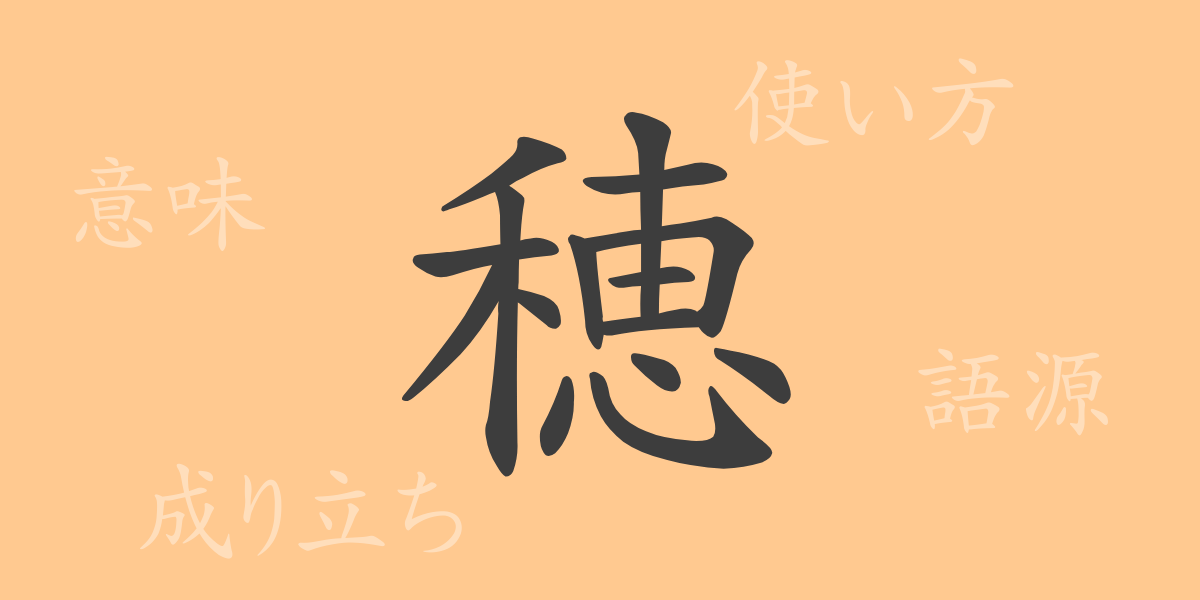Among the myriad of kanji in the Japanese language, ‘穂’ (ほ) is particularly cherished as a commonly used character. This character encapsulates the richness of nature and the joy of harvest, playing a significant role in the lives of the Japanese. This article delves into the origins, meanings, usages, and the beautiful kanji ‘穂’. Let’s explore the profound world of ‘穂’ together, and experience the depth of the Japanese language.
Origins of 穂
The journey into the etymology of ‘穂’ traces back to ancient China. The ancient character ‘禾’ represented grains like rice and wheat, and the small ‘dot’ on top symbolized the grains at the tip of the stalks. Over time, this ‘dot’ evolved into a line, leading to the formation of the kanji ‘穂’. As agricultural culture flourished, ‘穂’ came to symbolize abundance and prosperity, becoming prevalent in many expressions.
Meaning and Usage of 穂
The kanji ‘穂’ primarily denotes the mature part of plants, especially the grain-bearing tips of crops like rice and wheat. It is also used metaphorically to describe a collection of things, or the forefront of something, such as in the expression ‘technology’s cutting edge.’ For example, the term ‘technology’s 穂先’ refers to the latest advancements in a field.
Readings, Stroke Count, and Radical of 穂
Understanding the shape and meaning of ‘穂’ enhances our connection to the Japanese language:
- Readings: On’yomi ‘スイ’, Kun’yomi ‘ほ’
- Stroke Count: 15 strokes
- Radical: 禾 (のぎへん)
Phrases and Idioms Using 穂
Many idioms, phrases, and proverbs in Japanese incorporate ‘穂’, reflecting various nuances of its use:
- 穂高い (ほたかい): Describes something that is exceptionally excellent, originating from the image of grain stalks growing tall.
- 穂先を競う (ほさきをきそう): A phrase meaning to compete closely with each other, often used in contexts where competitive spirit is encouraged.
Conclusion on 穂
Exploring the meanings and histories embedded in a single kanji is a journey of rediscovering the richness of the Japanese language. Through ‘穂’, we can feel the reverence for nature and the evolution of culture. The link between form and meaning in Japanese words creates unique expressions. Incorporating idioms and phrases learned from ‘穂’ into daily life can enrich our appreciation of the language’s depth.

























